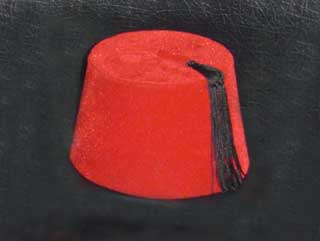In Morocco, weddings are celebrated with grandeur and deep-rooted cultural customs that reflect the rich heritage of the country. While the bride’s attire often draws much attention with its intricate details and vibrant colors, the groom’s traditional wedding dress is equally significant. It embodies elegance, dignity, and a reflection of Moroccan craftsmanship. Let’s explore the traditional Moroccan wedding dress for men and the cultural meaning behind it.
1. The Jabador

The Jabador is a two-piece outfit worn by Moroccan men, often made of silk or fine cotton. This attire consists of a long tunic paired with loose-fitting pants. For a wedding, the Jabador is usually made in neutral, elegant colors such as white, beige, or light gray, adorned with delicate embroidery that emphasizes its craftsmanship.
The Jabador is considered one of the more relaxed yet stylish options for a Moroccan groom and is commonly worn during pre-wedding events such as the Henna night or during other traditional ceremonies.
2. The Djellaba

The Djellaba is a long, loose-fitting robe with a hood that is synonymous with Moroccan men’s traditional dress. For weddings, the Djellaba is typically crafted from premium materials like silk, brocade, or velvet, and is often richly embroidered along the edges, chest, and sleeves. Grooms usually wear it in light, regal colors like white, cream, or gold.
This flowing robe is often worn over the Jabador, offering a more formal and ceremonial look. The hood, although part of the design, is not worn up but serves as a stylish feature of the attire.
3. Selham (The Cloak)

The Selham is an elegant cloak that Moroccan grooms wear as the final layer of their wedding attire. It is a sleeveless, cape-like garment made from fine wool or velvet, often decorated with rich embroidery along the collar and edges. The Selham exudes formality and is traditionally worn draped over the shoulders, giving the groom a stately and dignified appearance.
Selhams are usually in neutral or jewel tones, with white and cream being the most popular for weddings. This piece of clothing also signifies the groom’s transition into a new phase of life, wrapping him in both tradition and status.
4. Footwear: The Balgha

No Moroccan groom’s outfit is complete without the traditional leather slippers called Balgha. These handmade, pointed shoes are typically in gold, white, or black to match the wedding outfit. The Balgha are simple yet sophisticated, reflecting the modest and refined nature of Moroccan men’s fashion.
In a wedding setting, the Balgha adds the final touch to the groom’s attire, seamlessly blending comfort with style.
5. The Groom’s Accessories
Although Moroccan men’s wedding attire is more understated compared to the bride’s, there are still important accessories that highlight the groom’s outfit. These include:

- Tarboosh (Fez hat): A traditional cylindrical hat made from felt, often worn by the groom to add a touch of formality.
- Hizam: A decorative belt worn around the waist, especially with the caftan, to give structure to the outfit.
- Jewelry: While rare, some grooms may choose to wear subtle pieces of jewelry, such as a ring or a pendant, as part of their wedding ensemble.
Cultural Significance of the Groom’s Attire
Moroccan wedding attire for men is a blend of comfort, style, and tradition. It reflects the rich history of Moroccan craftsmanship and the importance of cultural identity in every celebration. Each piece of the groom’s outfit, from the Jabador to the Djellaba, is not just chosen for its aesthetics but for its symbolic meaning.
- Colors like white and gold are chosen for their association with purity, wealth, and happiness.
- Embroidery represents the centuries-old artisanal skills passed down through generations, a reminder of Morocco’s deep cultural heritage.
For the Moroccan groom, wearing this traditional attire is a way to honor the customs of his ancestors while stepping into his new role as a husband. The intricate details and symbolic choices in his outfit make it a key aspect of the wedding ceremony, often representing not only his personal style but also his family’s pride and tradition.
Moroccan men’s wedding dress is a timeless expression of tradition, elegance, and craftsmanship. While understated in comparison to the bride’s attire, the groom’s outfit holds equal significance, marking the importance of his role in the celebration. With carefully chosen garments such as the Jabador, Djellaba, Caftan, and Selham, Moroccan men step into their wedding day with pride and dignity, fully immersed in the rich cultural heritage of their country.

